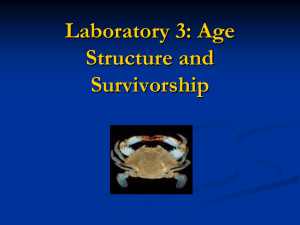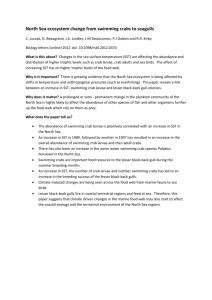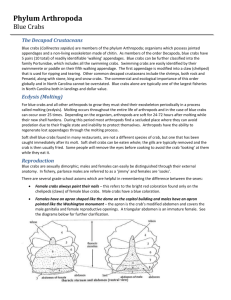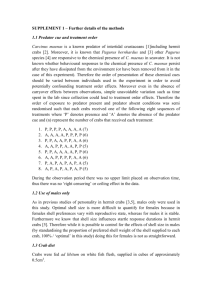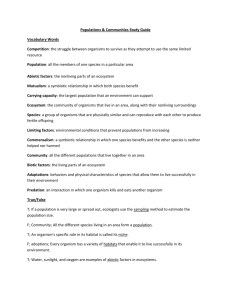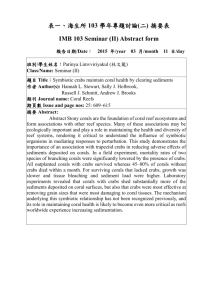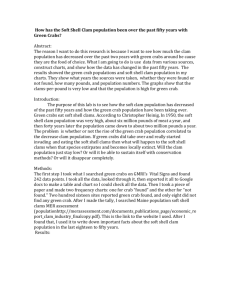Research Papper
advertisement
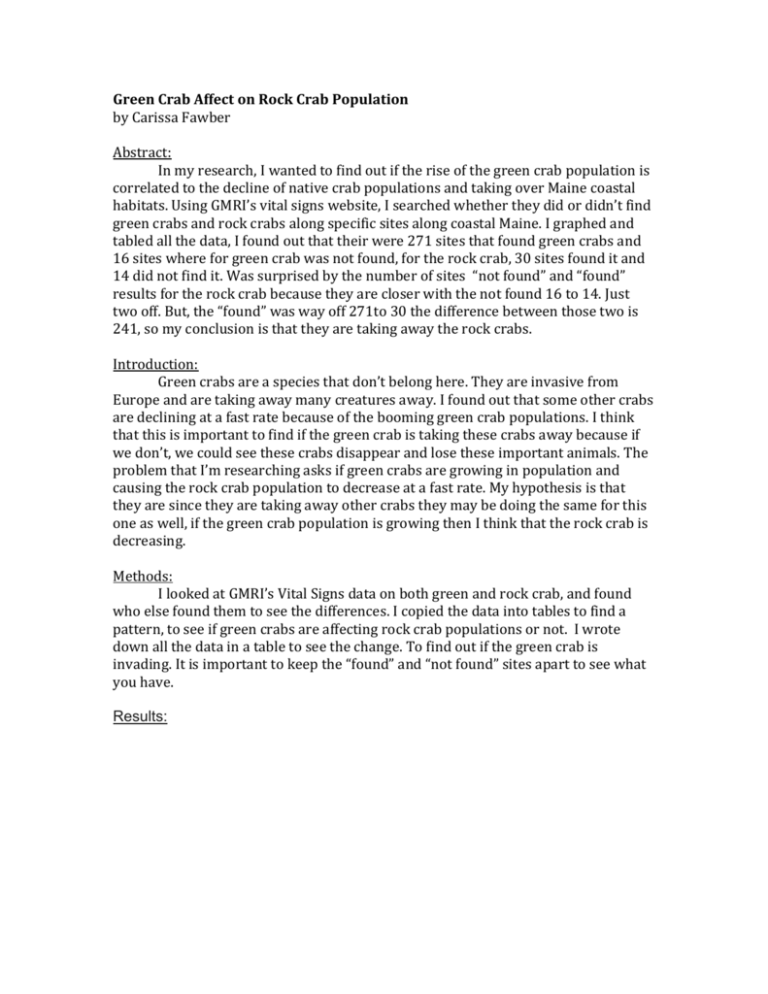
Green Crab Affect on Rock Crab Population by Carissa Fawber Abstract: In my research, I wanted to find out if the rise of the green crab population is correlated to the decline of native crab populations and taking over Maine coastal habitats. Using GMRI’s vital signs website, I searched whether they did or didn’t find green crabs and rock crabs along specific sites along coastal Maine. I graphed and tabled all the data, I found out that their were 271 sites that found green crabs and 16 sites where for green crab was not found, for the rock crab, 30 sites found it and 14 did not find it. Was surprised by the number of sites “not found” and “found” results for the rock crab because they are closer with the not found 16 to 14. Just two off. But, the “found” was way off 271to 30 the difference between those two is 241, so my conclusion is that they are taking away the rock crabs. Introduction: Green crabs are a species that don’t belong here. They are invasive from Europe and are taking away many creatures away. I found out that some other crabs are declining at a fast rate because of the booming green crab populations. I think that this is important to find if the green crab is taking these crabs away because if we don’t, we could see these crabs disappear and lose these important animals. The problem that I’m researching asks if green crabs are growing in population and causing the rock crab population to decrease at a fast rate. My hypothesis is that they are since they are taking away other crabs they may be doing the same for this one as well, if the green crab population is growing then I think that the rock crab is decreasing. Methods: I looked at GMRI’s Vital Signs data on both green and rock crab, and found who else found them to see the differences. I copied the data into tables to find a pattern, to see if green crabs are affecting rock crab populations or not. I wrote down all the data in a table to see the change. To find out if the green crab is invading. It is important to keep the “found” and “not found” sites apart to see what you have. Results: So as you can see, the difference between the graphs with green graph is the Green crab and blue is the rock crab the green crab found and not found are vary far apart and the rock crab found and not found are closer together so you can see that if you went on a beach you would see around ten times as much Green crabs. Conclusion: I had to figure out if Green Crabs are effecting the population of Rock Crabs. My hypothesis was yes they are because the green crabs are negatively affecting other crab populations too. The results are 271 green crabs sites found vs. 30 rock crabs found. sixteen sites where green crabs were not found only 14 sites did no find rock crabs. You can see green crabs are affecting the rock crabs because populations the “not found” are really close together you can see how far apart the “found” was to show the difference and to see how the green crabs are effecting the rock crabs. In terms of where they live, if you find one rock crab you should be able to find around ten green crabs. This information is useful to show why the green crab needs to be eradicated or else our native crabs will be gone. Some of the issues with the data was that there was so many green crabs that it took time to sort through and tabulate the data. I think that we should try to take these crabs away in as many different ways as possible, else our native crabs may disappear. So I think that we could use them for bait to take them away, even though it may take some time, it still is a solution that might work like if we used them for bait or eat more of them then we can slowly take them away.


